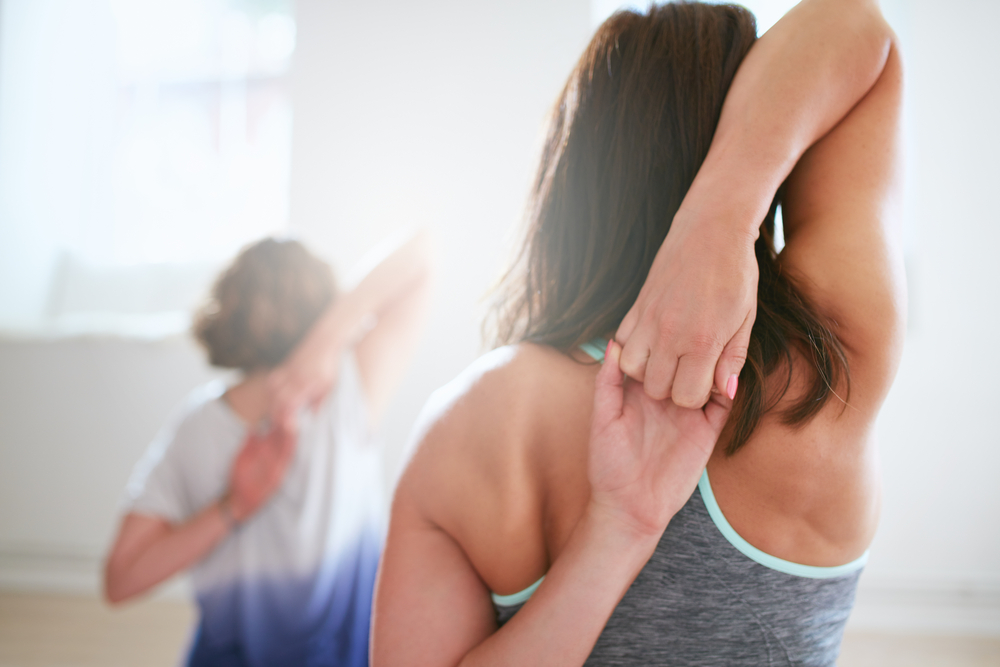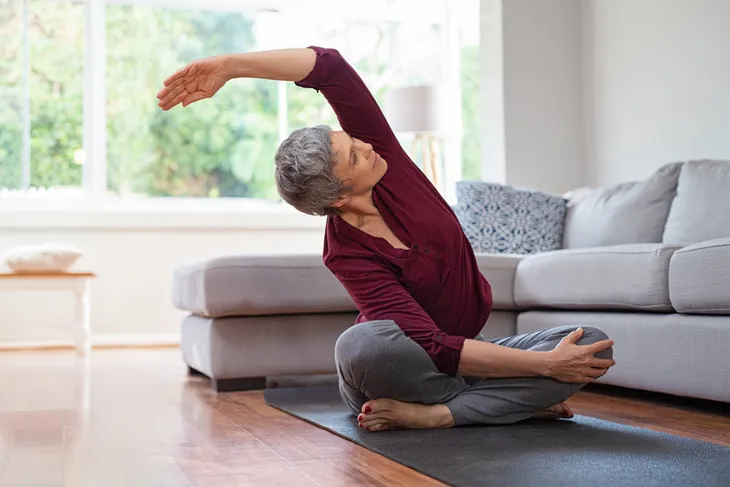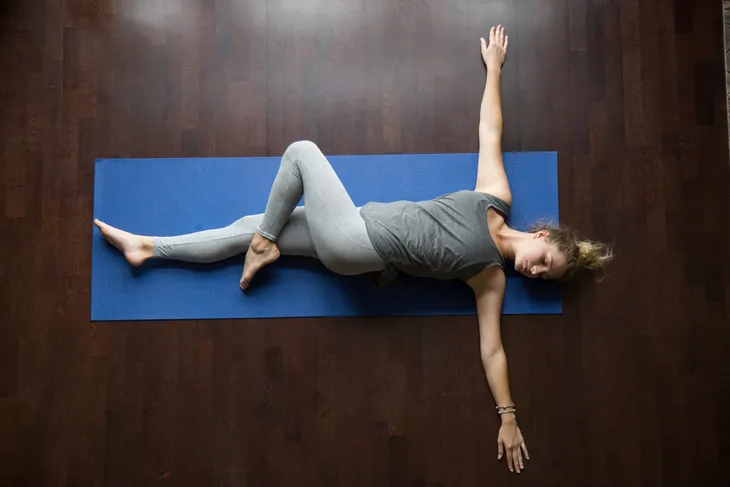Do you stretch following a workout? If you don’t, be forewarned that stretching is often considered paramount for the pain reduction/muscle recovery process. Yet so many of us either rush through it or don’t do it at all.
Stretching promotes fresh blood circulation to counteract your workout by aiding flexibility and loosening up any knotted, pain-ridden muscles. So be sure to stretch and when you do, avoid these six common stretching mistakes…
Avoiding Under-Stretched Areas
When you stretch, where do you start? The neck the shoulders, the biceps/triceps? Chances are after a run or a leg workout, it’s your hips and hamstrings that are screaming for a good stretch. However, these are two under-stretched areas that many shy away from.
Most of us ignore muscles that are chronically tight…for instance, “hamstring tightness behind the knee…and straightening your legs in a stretch often can help alleviate the tension,” explains Dr. Mary Jayne Johnson, Exercise Physiologist, fitness and wellness expert for Shape and SELF magazines, and founder of Profound Wellness.
Static Stretching Before a Workout
While we’ve often heard that we should always stretch before our workouts to warm up and decrease chances of injury, this article from the American Council on Exercise (ACE) says otherwise. The general consensus among fitness professionals is that you should never stretch tight, cold muscles using static stretches (still stretches focused on one muscle group).
However, you can use dynamic stretches (stretches with movement i.e., lunges) to warm up the body for exercise. The key is to warm up the muscles with gradual activity first to avoid an injury. However, research does uphold that static stretching post-exercise and before bed can promote flexibility and reduce injury risk.
Forgetting to Stretch
You guessed it, the most common stretching mistake is forgetting to stretch, and that’s among sedentary types to newbie fitness buffs to professional athletes. The truth is that none of us stretch as much as we should.
According to Kelvin Gary, a NASM Certified performance enhancement coach and personal trainer from New York City, warming the body up with dynamic stretching is vital for everyone, regardless of your current flexibility. In fact, skipping stretching will mean decreased blood flow to muscles and deteriorated flexibility over time.
Good Morning Stretches
Many of us have read about how good it feels to literally stretch our way out of bed in the mornings. While it’s one thing to envision a morning stretch accompanied by birds chirping on your windowsill, it’s another thing to stretch cold muscles.
First thing in the morning, your muscles are still cold due to sleep and inactivity, so avoid an injury by getting up and moving around for a bit before you launch into a series of stretches. According to Dr. Bill Holcomb, a professor of athletic training at Las Vegas’ University of Nevada, “You should never [static] stretch a cold muscle in any way.”
Stretch Frequently and Consistently
This is the major reason why rushing through the stretching portion of your workout doesn’t do your body any good. According to the strength and conditioning community, stretching only once in a blue moon isn’t hardly enough.
Take it from Boston-based Naturopath, strength and conditioning specialist, personal trainer, and yoga instructor, Stephen Cabral, bodies expect a good stretch daily, more than once if possible. Frequency is key, even if it’s stretching frequently, for 5-minutes at a time. Remember, consistent stretching will enhance range of motion while preventing the risk of muscle strain.
Don’t Hold Your Breath
There’s a good reason why yoga focuses on a balance between stretching and breathing. Breathing while stretching increases circulation, soothes mental and physical tension, and increases flexibility and range of motion.
This is why your yoga teacher consistently reminds you to “breathe deeply” during yoga class. Holding your breath tightness all the muscles throughout the body, impeding flexibility and leaving you prone to an injury.









